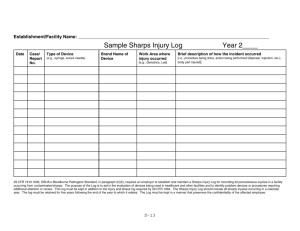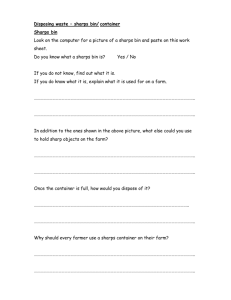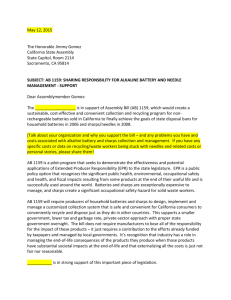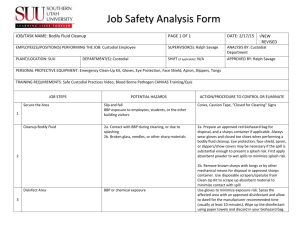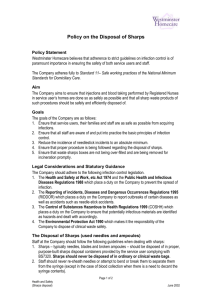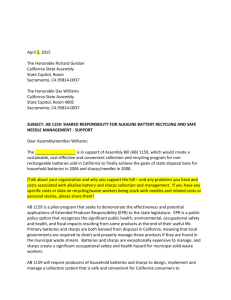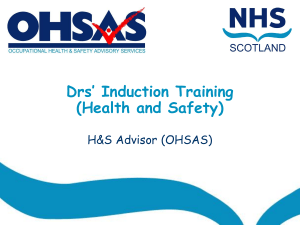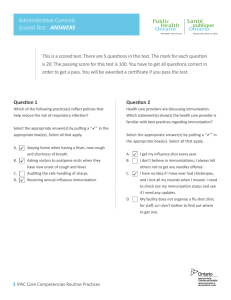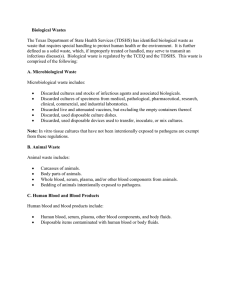Essential Steps
advertisement
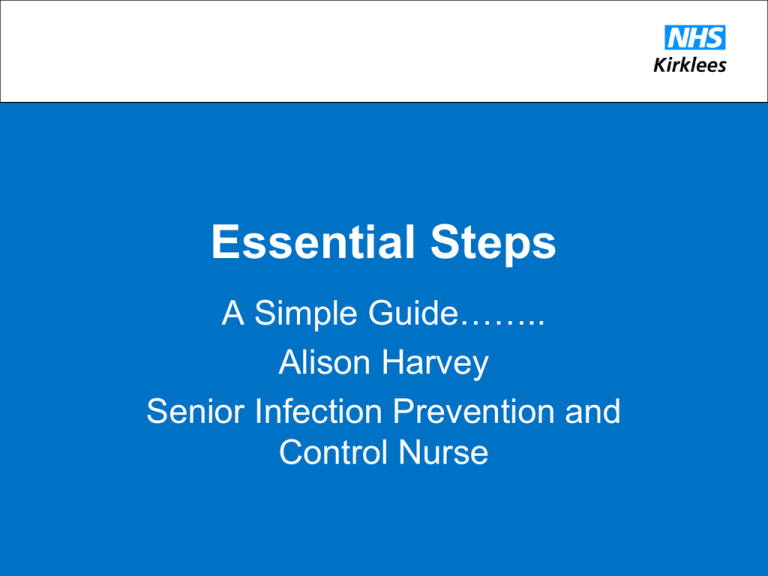
Essential Steps A Simple Guide…….. Alison Harvey Senior Infection Prevention and Control Nurse What is it ? A programme of observational audit to demonstrate compliance with good practice Where did it come from ? • A Department of Health (DoH) iniative • Developed for the community i.e. Community nurses, Care homes, Podiatry etc • For anywhere ‘hands on care’ is delivered Why did the DoH do it ? Essential steps to safe, clean care aims to provide a framework to support local organisations’ use of best practice to prevent and manage the spread of infections and ultimately improve patient and service user safety. The framework is composed of a number of interlinked tools and products and can be used on an organisation-wide basis, as well as in individual departments, teams, care homes and so forth. The idea is that organisations determine for themselves which of the elements they wish to use once they have assessed their current position in preventing and managing infections. Essential steps to safe, clean care is intended to be implemented and used in ways that will support local success. It is not expected that all organisations will involve the same staff grades or roles, as the tools are locally adaptable What does it mean to me ? • • • • Part of ongoing personal development Assists the appraisal process Benchmarks standards of care Part of the CQC’s assessment process within care homes • Gives assurance to commissioners that care provided is of a quality standard What does it look like ? Tools and products provided in the pack include: • self-assessment tool and future action; • signposting to useful resources to inform users; • three key Essential Steps that, if implemented within organisations, may impact significantly on reducing the level of infections; • review tools to assist individuals/teams in monitoring compliance and to record continuous compliance or improvement; • certificates for staff, to recognise their progress in performing safer practice; Contents • Each audit typically contains 4 or 5 risk elements Typically Preventing the Spread of Infection has :-Hand hygiene -Use of personal protective equipment -Safe disposal of sharps -Aseptic technique Prompt Sheets for Assessors • • • • One is available for each audit Detailing each intervention Shows the criteria required And information on why the standard may not be met ESSENTIAL STEPS Prompts for assessors Audit 1 Preventing the spread of infection Intervention Criteria required Standard not achieved if Hand hygiene (prior to patient contact) Suitable method chosen – soap and water or alcohol if hands visibly clean Hands not washed. Nail varnish False nails Wrist watch Wrist or hand jewellery (plain wedding band allowed) Technique used for hand washing or alcohol rub effectively cleans hands (e.g. 6 steps see over) Personal Protective equipment Gloves, apron, face protection worn as appropriate. (See risk assessment over). PPE not worn as required by procedure Aseptic Technique Sterile equipment used Level of asepsis is not maintained/ breaks in asepsis not addressed. Non-touch technique adopted Clean technique is only carried out if appropriate to the procedure/ patient. Sharps Sharps container available – not overfilled Sharps used safely e.g. not resheathed/ passed hand to hand. Sharps disposed of intact by the user. Failure to safely use sharps and dispose of at point of use. Suggested hand washing and alcohol application technique 3 Wash/rub ALL surfaces of the hands. These six steps should take about 15 seconds Risk assessment for the use of PPE. *NB the term body fluids includes wounds. NO contact with body fluids* No protective clothing required between clothing and patient, and or equipment (including laundry) Contact Contact with body fluids (incl. excessive skin scales) but low risk of splashing Contact with Disposable plastic apron Disposable gloves and plastic apron Disposable gloves, plastic apron, face protection body fluid and high risk of splashing Risk assessment for asepsis. Aseptic technique to be used instead of a clean technique if the patient falls into any of the following categories: Babies Immunocompromised patients Patients with diabetes Clients with chronic disease Frail patients Patients in poor nutritional state Where can I find them? • All the tools, assessor sheets and supporting information are available to download on the Infection Prevention and Control Website – in the care home section @ • http://www.kirklees.nhs.uk/yourhealth/infection-prevention-and-control/ Thanks for listening • Any questions ? • Next ….Essential steps workshops
